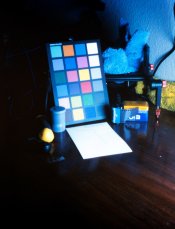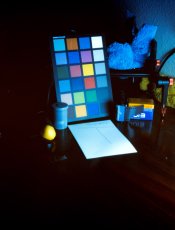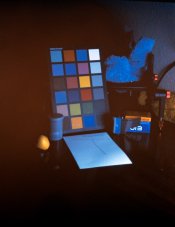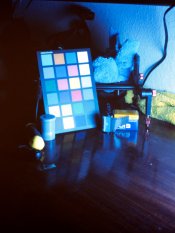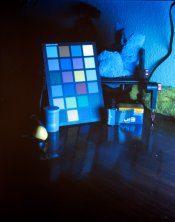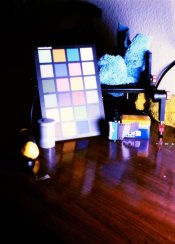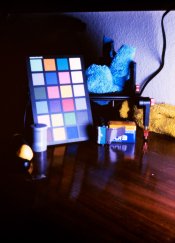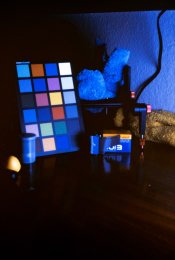This morning I did a new test run of this process with some modifications. I've heard many good things about Dektol and had a batch mixed up, so I tried it. Along with this, I also wanted to try a homemade chemical fogging method, rather than needing to expose the film to light. I tried this with brackets on (new) Ektachrome 100 and Provia 100F.
Procedure: (all temperatures except fogging at 38.6C/101.5F in sous vide bath)
* Dektol 1+3. 6 minutes total, 30s initial agitation, 4x per 30s after
* Water rinse
* Fog bath made from 5.5g of "Iron Out" powder and 1L of water. Temperature was around 45C (hot to touch, but not too hot to hold), 5 minutes total with 30s initial agitation and 4x agitation per 30s after
* Water rinse
* C-41 develop for 4 minutes. I used the "kit" agitation method, 10s initial agitation, 4x per 30s after (Kodak instructions are 2x per 15s with 30s initial, but I've had bad results with it)
* Water rinse
* C-41 Bleach, 8 minutes
* Water rinse
* C-41 fix, 6.5 minutes
* Rinse and stabilize
This looked very good to my eye when I first pulled it out, but then proceeded to get a magenta purple haze as it dried. When I scanned it I realized the results are quite suboptimal. First, using Dektol 1+3 looks somewhat too low contrast (dingy highlights) and was around 1.5 stops below box speed. What is exciting however is that the Ektachrome came out without awful casts. Previous tests using HC-110, Ektachrome always came out with a thick green cast. The colors also look fairly decent and with high saturation, with minor "brown" crossing in dark grey. I intend to try Dektol 1+2 for 8m next to see if I can get a boost in contrast and speed.
Another problem in this is that the chemical reversal bath was not sufficient. I'm not sure if it needed more Iron Out, or if more time was needed. The Ektachrome looks maybe 90% fogged (ie, very dark blacks with slight brown cast), but the Provia is probably only 60% fogged. (Dark, but not very dark, blacks with strong purple cast) I will probably try to use 10g of Iron Out next time and 6m30s (iirc the same as official E-6 fogging time).. as well as being more careful with temp and trying to keep things to a consistent 38.6C for easy repeatability.
Brackets have not been processed at all other than setting the white balance setting in RAW to be accurate to how it looks to my eye (camera's daylight rendered it more blue than it actually looked). Order is ISO 100, ISO 200, ISO 50, ISO 25. Also, a ton of glare was present on the color card, didn't realize it'd mask things that strongly on film, but apparently is another thing I should not do when making test strips. Note also that I scanned for "best looking", not a consistent level of exposure.
Ektachrome 100:

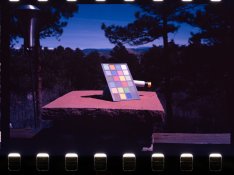
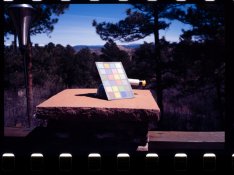
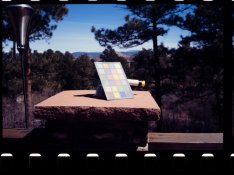
Provia 100F:
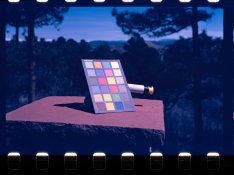


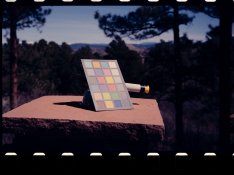
Note: If wanting to repeat this yourself, make the Iron Out mixture just before usage. Everything I've read about this is that the solution does not keep at all, maybe not even long enough to be brought up to exactly 38.6C in a sous vide bath. Temperature shouldn't need precision, but I've read that too much fogging with this can cause solarization. I've not seen anyone ever trying to use this as a substitute for the E-6 reversal bath, nor at temperatures above 70F, so this is uncharted territory.






